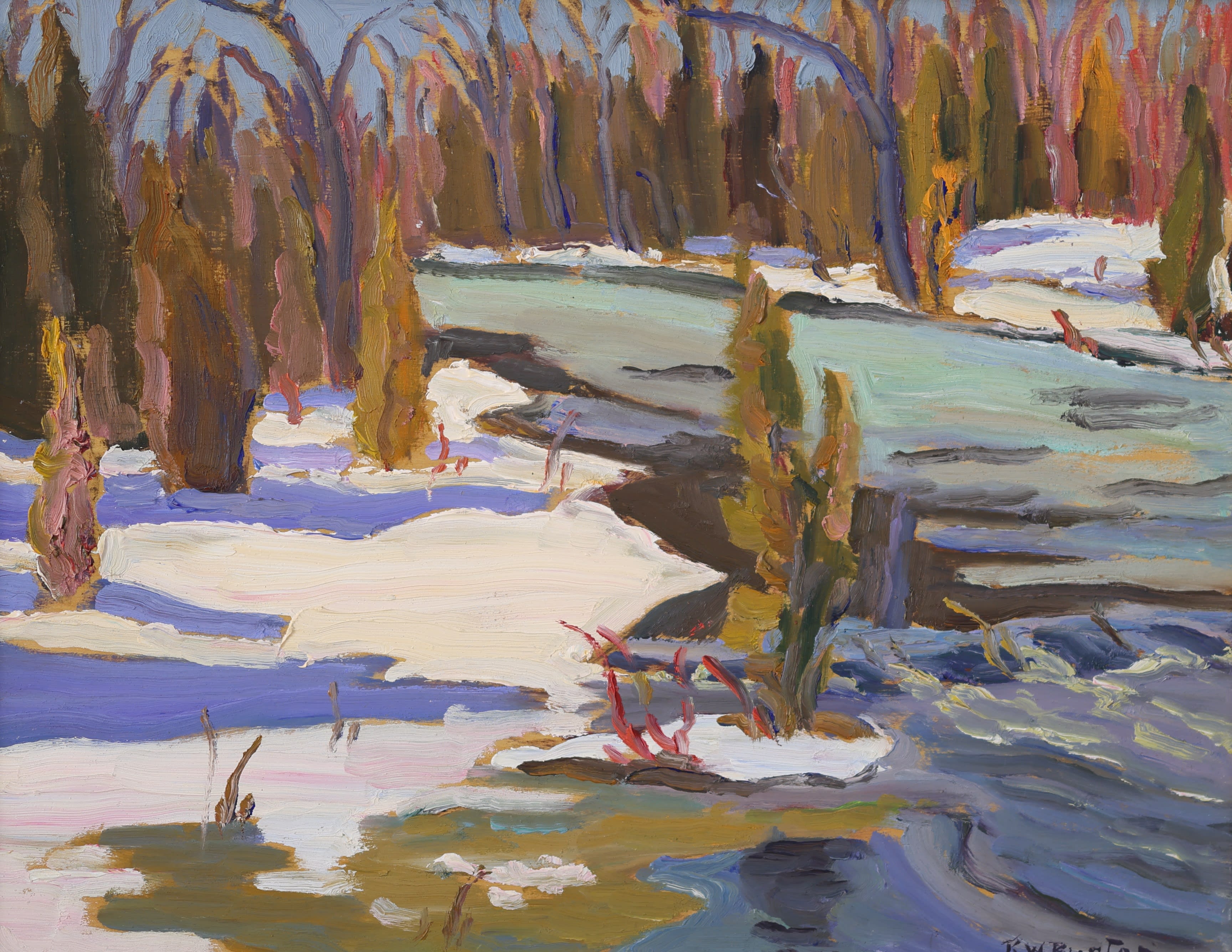
Ralph Wallace Burton, a prominent figure in the Canadian art world, remains celebrated for his vivid and evocative landscapes. Born in 1905 and active until his death in 1983, Burton's artistry captured the rugged beauty of the Canadian outdoors, leaving a lasting impression on the art community.
Burton's artistic journey began under the guidance of A.Y. Jackson, a member of the famed Group of Seven. This association significantly influenced his style and subject matter. Burton's early works often featured scenes from the Ottawa Valley region, where he spent much of his life.
Renowned for his plein air paintings, Burton's work predominantly focused on natural Canadian landscapes in formidable climates. He was known for his use of oil on birch plywood panels, a technique that added a unique texture and depth to his paintings. His style was characterized by a vibrant use of color and assured draughtsmanship, with a rhythmical flow in his brushstrokes.
Teaching and Influence: Apart from his painting career, Burton was also a revered art teacher in the Ottawa region. His students admired his love for color and powerful observation skills. He was described as having a very rhythmical style, with his artworks rarely featuring straight lines but instead flowing movements and variations in color.

Autumn, McGregor Lake, 1948
Several of Burton's works are displayed in prominent galleries, including the Ottawa Art Gallery, which houses pieces like "Bennett Lake, Ontario near Perth" and "Sun Drawing Water." His series on Lebreton Flats, a working-class neighborhood in Ottawa, is particularly notable for its documentation of the area ahead of its demolition for urban renewal. These works are praised for their meticulous recording of architectural detail and their portrayal of the neighborhood's vibrant community life.
Ralph Burton's art not only celebrated the Canadian landscape but also captured moments of history, as seen in his Lebreton Flats series. His works continue to be admired for their ability to convey the beauty and tenacity of natural and urban environments in Canada. Burton's contributions to Canadian art are preserved in galleries and private collections, making him an enduring figure in the nation's artistic heritage.

Spring Creek, Near Burritts Rapids, ON, 1977
Ralph Burton's legacy as a Canadian artist is defined by his profound connection to the landscapes he painted and his ability to teach and inspire future generations. His work remains a testament to the beauty and diversity of Canadian scenery, capturing moments of natural grandeur and historical significance.
